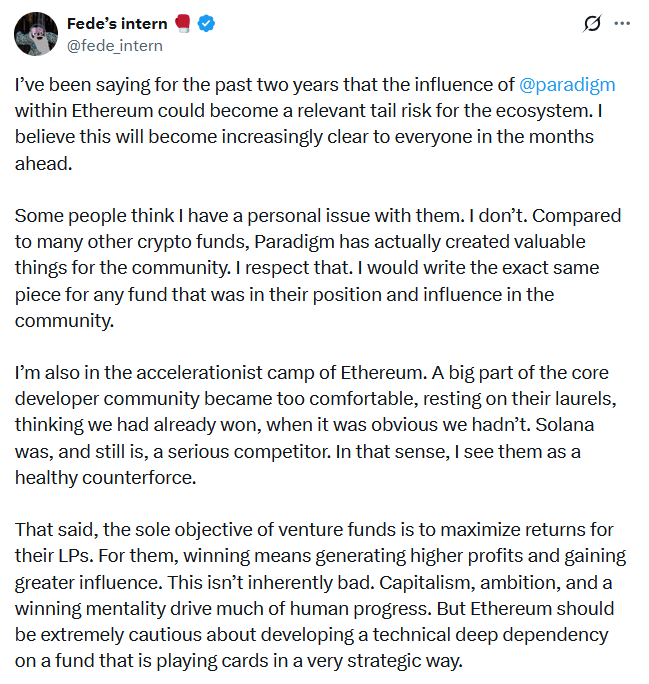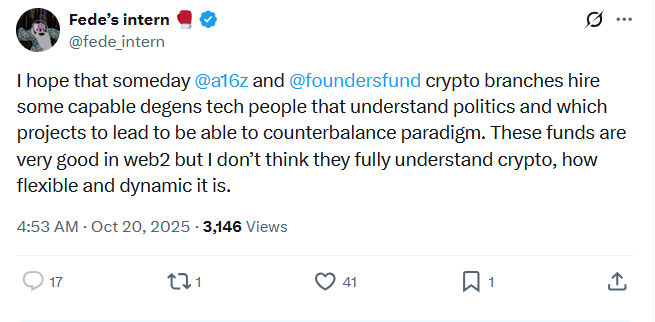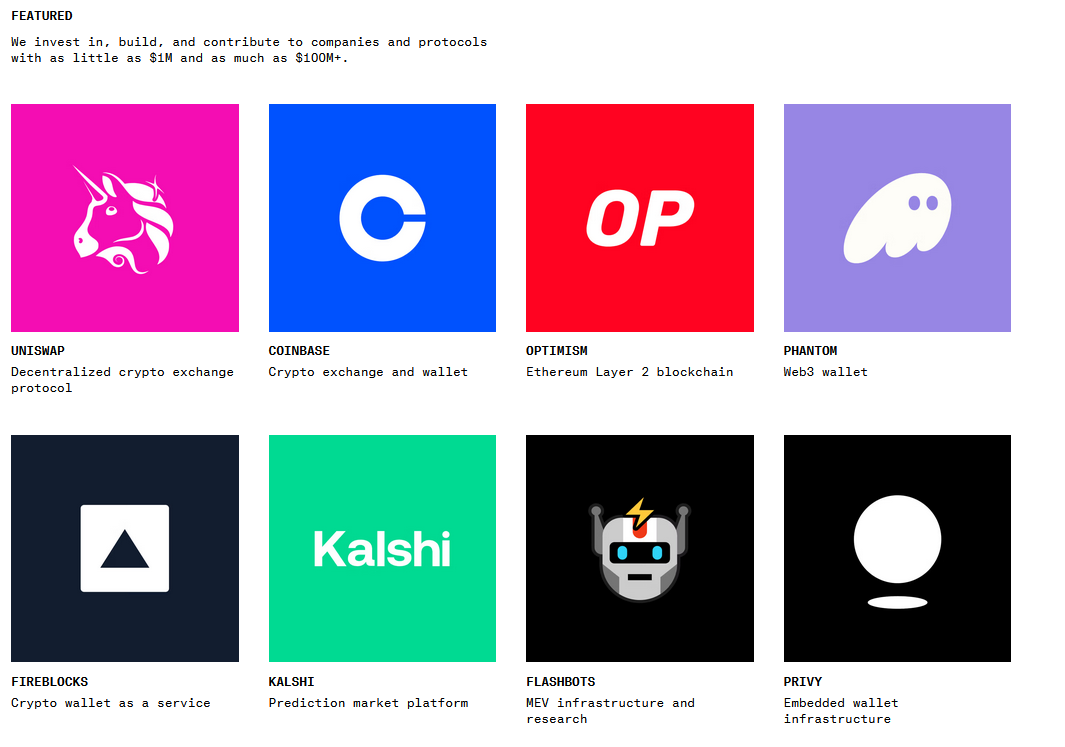Ethereum developer Federico Carrone has warned that Paradigm’s expanding influence on the network poses a potential “tail risk” due to conflicting corporate profit motives with Ethereum’s decentralized ethos. This concern highlights the need for the community to maintain independence from venture capital sway.
-
Paradigm’s investments in Ethereum tools like Reth raise dependency concerns.
-
Carrone emphasizes Ethereum’s philosophical roots beyond corporate control.
-
Paradigm’s Tempo project with Stripe exemplifies centralized contrasts to Ethereum’s model, per recent analyses showing over $1 billion in Paradigm’s crypto portfolio.
Discover how Ethereum developer Federico Carrone warns about Paradigm’s influence risking ecosystem misalignment. Explore key concerns and implications for crypto’s future. Stay informed on Ethereum developments.
What is Paradigm’s Growing Influence on Ethereum?
Paradigm’s growing influence on Ethereum stems from its substantial investments in core development tools, researcher hires, and open-source projects critical to the network. Ethereum developer Federico Carrone, a core contributor known as “Fede’s intern” on X, has publicly cautioned that this venture capital firm’s profit-driven strategies could create a “tail risk” for the ecosystem. While Paradigm has contributed valuable resources, Carrone argues that over-reliance on such entities might shift priorities away from Ethereum’s decentralized, community-led vision.

Source: Federico Carrone
Ethereum, as the leading smart contract platform with a market capitalization exceeding $400 billion as of October 2025 according to CoinMarketCap data, has long prided itself on its open-source and decentralized principles. Carrone’s statement, shared in a post on X on Sunday, underscores a broader debate within the crypto community about balancing innovation funding with ideological purity. He notes that Paradigm has “created valuable things for the community,” yet warns that the firm’s ultimate goals—centered on profit and strategic positioning—could lead to misalignments if not carefully monitored.
This perspective aligns with historical tensions in open-source projects where corporate involvement has occasionally altered development trajectories. For instance, Ethereum’s upgrades like the Merge in 2022 were community-driven, but external funding sources now play a larger role in sustaining ongoing improvements.
How Does Paradigm’s Role Differ from Ethereum’s Core Values?
Paradigm’s involvement includes funding key Ethereum infrastructure such as the Rust-based Reth software, which enhances node operations, and hiring prominent researchers to advance protocol development. However, Federico Carrone argues this creates technical dependencies on a for-profit entity, potentially drifting priorities toward corporate incentives rather than the community’s long-term vision. “When corporations gain too much legibility and influence over open source projects, priorities start to drift away from the community’s long-term vision and toward corporate incentives. That’s how misalignment begins,” Carrone stated in his post.
Supporting data from Paradigm’s portfolio reveals investments totaling over $1.5 billion in crypto ventures since 2018, including DeFi protocols, NFTs, and blockchain security firms, per reports from Bloomberg and other financial outlets. This scale amplifies concerns, especially with projects like Tempo, a layer-1 blockchain incubated with Stripe in September 2025. Tempo focuses on stablecoins and payments under significant corporate oversight, contrasting Ethereum’s permissionless model where no single entity controls governance.
Expert opinions echo this caution. Blockchain analyst Laura Shin, in her commentary on similar dynamics, has noted that venture capital can accelerate growth but risks centralization if influence consolidates. Ethereum’s own governance, guided by the Ethereum Foundation—a non-profit—relies on diverse contributors to mitigate such risks. Carrone’s call for caution emphasizes fostering counterbalances, like increased community funding initiatives, to preserve Ethereum’s philosophical and political movement larger than any corporation.

Carrone is calling for a counterbalance in a follow-up post. Source: Federico Carrone
Paradigm, founded in 2018 by Sequoia veteran Matt Huang and Coinbase co-founder Fred Ehrsam, positions itself as a crypto and AI investment firm committed to advancing the space through investing, building, and research. Its announcement for Tempo highlights goals to address “friction points and opportunities” in payments, yet critics like Carrone see it as emblematic of broader strategic plays that prioritize control over decentralization.
Frequently Asked Questions
What are the main risks of Paradigm’s influence on Ethereum for developers?
Ethereum developers face risks of technical dependencies on Paradigm-funded tools like Reth, which could lead to priority shifts favoring profit over innovation. Federico Carrone highlights this as a “tail risk,” urging the community to build independent alternatives to safeguard Ethereum’s decentralized ethos, based on observations from the past two years.
Is Paradigm’s Tempo project a threat to Ethereum’s market position?
Paradigm’s Tempo, developed with Stripe, focuses on stablecoin payments in a controlled layer-1 environment, differing from Ethereum’s open model. While it may compete in niche areas, Ethereum’s established $400 billion-plus ecosystem and DeFi dominance—handling over $100 billion in total value locked per DefiLlama—provide resilience against such corporate-led challengers.
Key Takeaways
- Monitor Venture Influence: Paradigm’s contributions to Ethereum are beneficial but require vigilance to prevent corporate agendas from overshadowing community goals.
- Preserve Decentralization: Projects like Tempo illustrate centralized alternatives, reinforcing Ethereum’s value in permissionless innovation and governance.
- Community Action Needed: Developers should prioritize diverse funding to counterbalance VC sway, ensuring long-term alignment with Ethereum’s founding principles.

Some of Paradigm’s investment portfolio. Source: Paradigm
Paradigm has demonstrated commitment beyond finance, such as supporting legal defenses for crypto developers like Tornado Cash co-founder Roman Storm and advising on security with experts like ZachXBT. These actions reflect a firm conviction in the ecosystem, yet Carrone’s warnings prompt essential discussions on sustainability.
Conclusion
In summary, Paradigm’s growing influence on Ethereum offers innovation opportunities but raises valid concerns about value misalignment, as articulated by developer Federico Carrone. By referencing official Ethereum Foundation guidelines and market data from sources like CoinMarketCap, the community can navigate these dynamics thoughtfully. As Ethereum evolves toward scalability upgrades like Dencun, maintaining its decentralized core will be crucial—COINOTAG encourages readers to engage in governance discussions to shape a resilient future for the network. Published October 2025; last updated October 2025 by COINOTAG.
